Host Piece for August, September, and October
Art Collections
Lobby
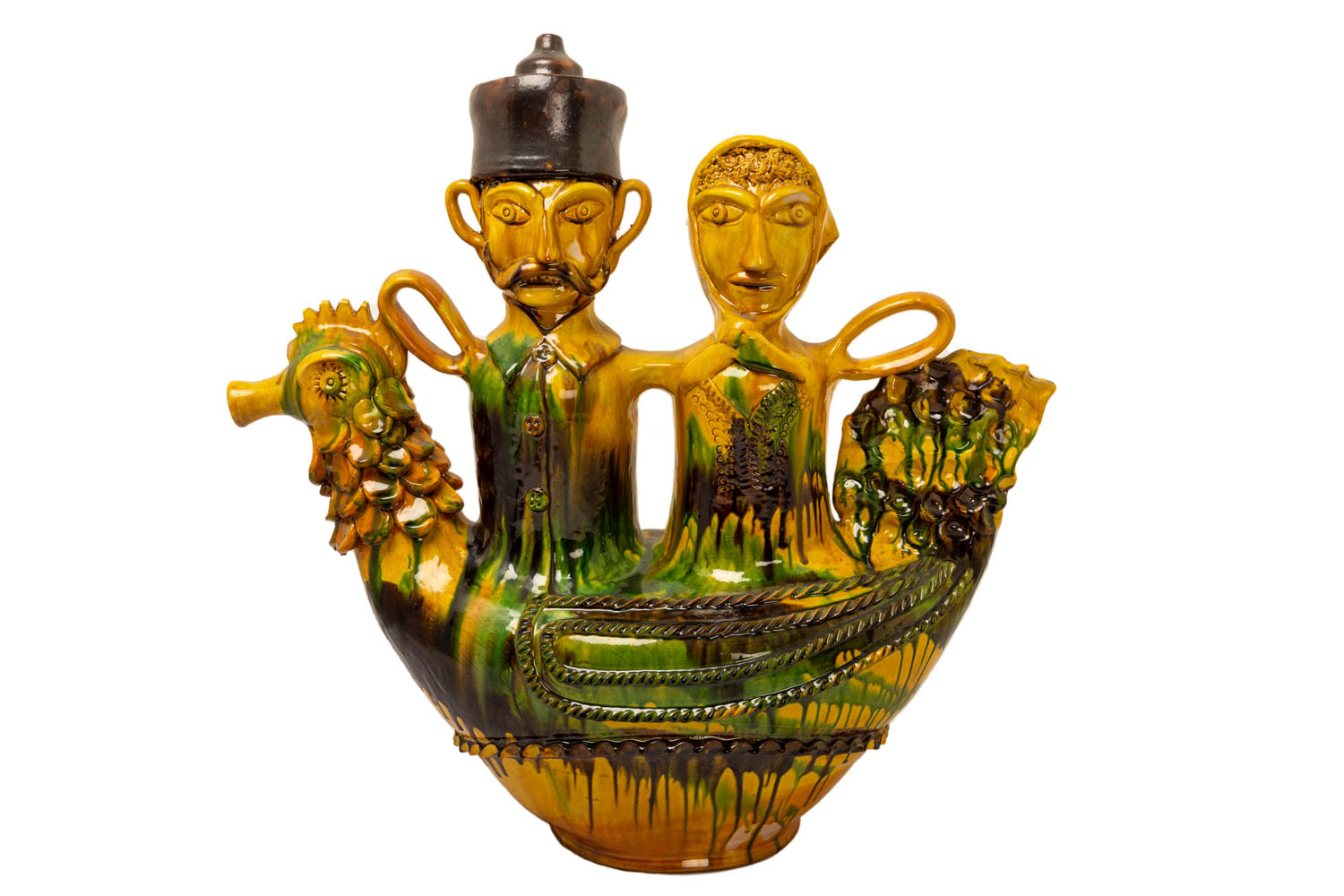
Unknown author
Poor family seated on hen, from Serbia
1973
Glazed ceramic
Reg. 2774.1
National Museum of Colombia
Donated by the Belgrade Ethnographic Museum (1973)
From the Balkans to the Andes: Rediscovering Serbia
This pottery is an example of Serbian folk art that speaks of the influences that shaped this country's cultural identity. Made in the second half of the 20th century, the piece used postmodern methods to reinterpret Serbia's popular heritage.
The decorative piece represents a peasant couple in traditional dress, perched on top of a hen. The woman wears a head scarf and an embroidered vest, known as a jelek. The man wears a button-down shirt with a collar and a hat similar to a šubara. These garments were of daily use until the mid-19th century when mass-produced modern garments gained in popularity. They are currently used in folk dances and presentations.
Due to the influence of the Roman, Byzantine, and Ottoman empires, Serbian pottery evolved from rudimentary shapes and designs to the production of technologically-advanced objects. Visible in this piece are characteristics noted in ceramics found in archaeological excavations in various parts of the Serbian territory, including the use of a pedal potter's wheel, glaze techniques, and irregular brown, yellow, and green spots in their decoration.
During the second half of the 20th century, modern ceramicists embraced postmodernist traditions and, through processes of citation and appropriation, reimagined popular artistic language and produced a new artistic identity. This object, the result of these processes, was donated to the National Museum of Colombia in 1973, together with five other ceramics, by the Ethnographic Museum of Belgrade, as part of the Yugoslavian Folk Art exhibition. The exhibition showcased the diversity and cultural richness of the Socialist Federal Republic of Yugoslavia, a State composed, until its disintegration in 1991, by the Republics of Bosnia and Herzegovina, Croatia, Slovenia, Macedonia, Montenegro, and Serbia.
The artwork selected for La Anfitriona is part of a ceramic set composed of six pieces, which was donated to the National Museum of Colombia by the Ethnographic Museum of Belgrade in 1973, after being presented in the exhibition Folk Art of Yugoslavia. The objects were produced by the same author, who marked them with the symbols "ВЂ". On close analysis, it is possible to appreciate some decorative elements that constitute the personal style of the ceramist, such as the way of depicting the characters and the finishes applied.
The other pieces that comprise this set are:
| 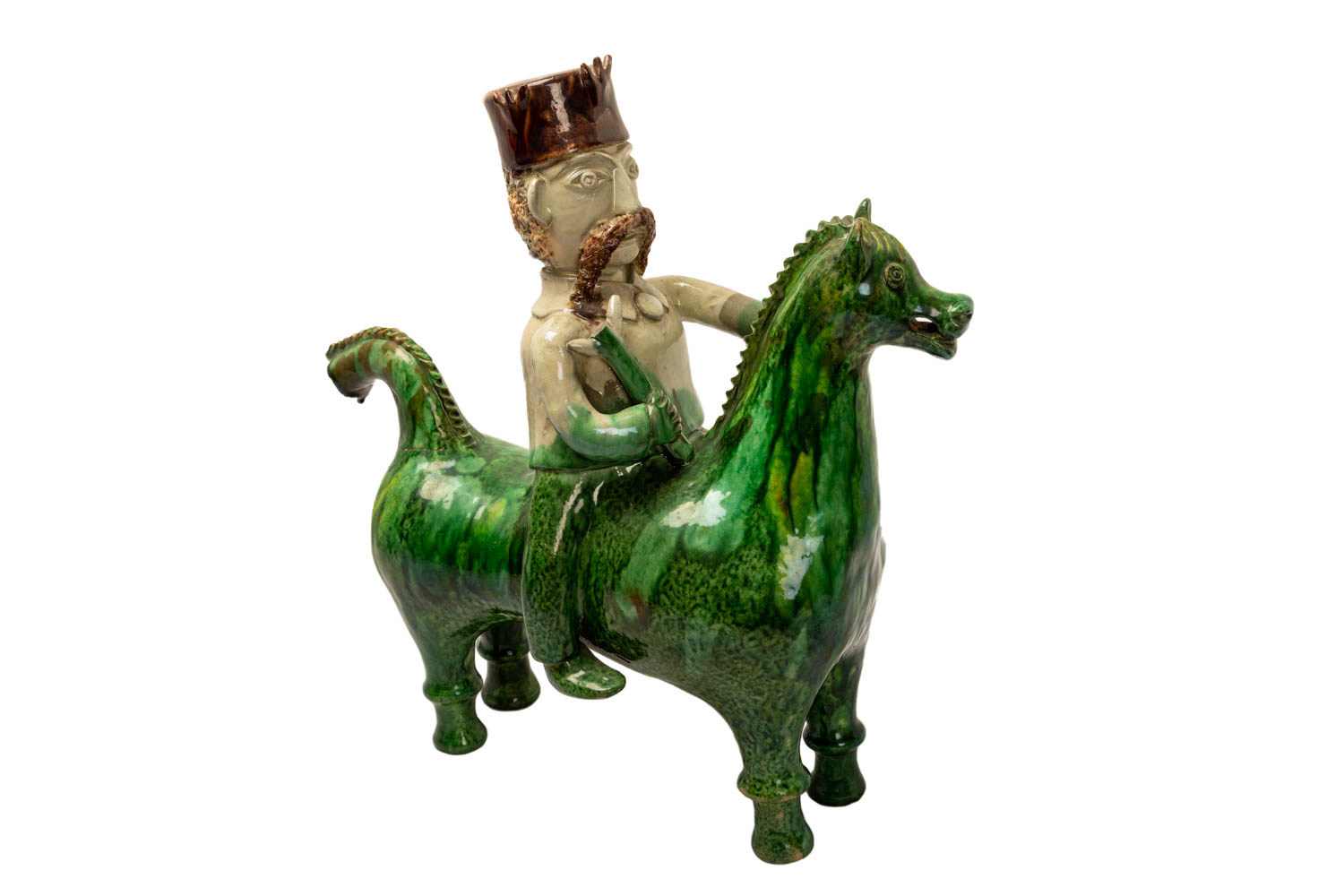
| |
Unknown
Saint Spiridon on horseback, from Serbia
1972
Glazed ceramic
43,6 x 43 x 18 cm
Reg. 2774.2
National Museum of Colombia
Donated by the Belgrade Ethnographic Museum (1973)
|
|
| 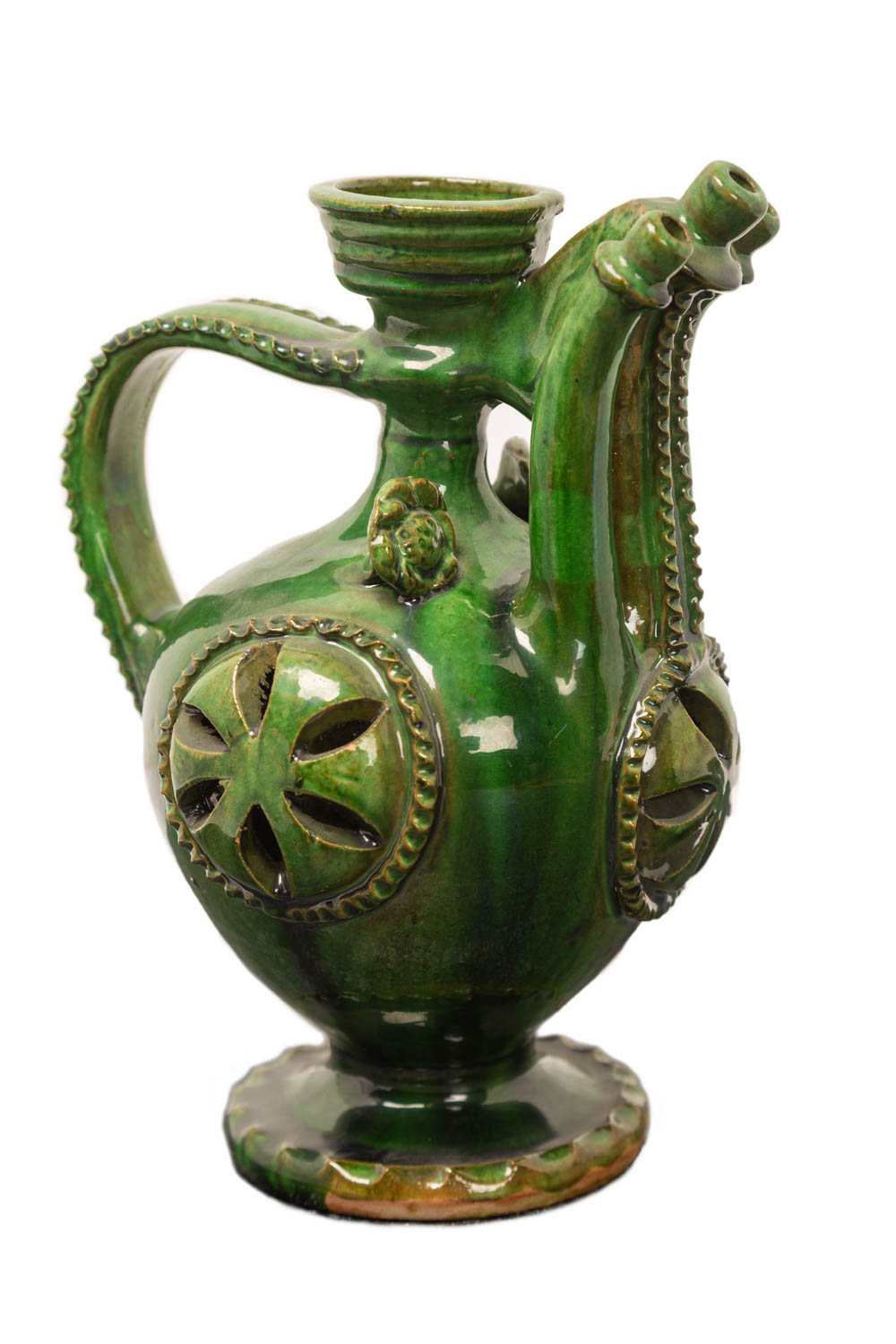
| |
Unknown
Bardak, water container, from Serbia
Ca. 1968
Glazed ceramic
23,5 x 17,5 x 14 cm
Reg. 2774.3
National Museum of Colombia
Donated by the Belgrade Ethnographic Museum (1973)
| |
| 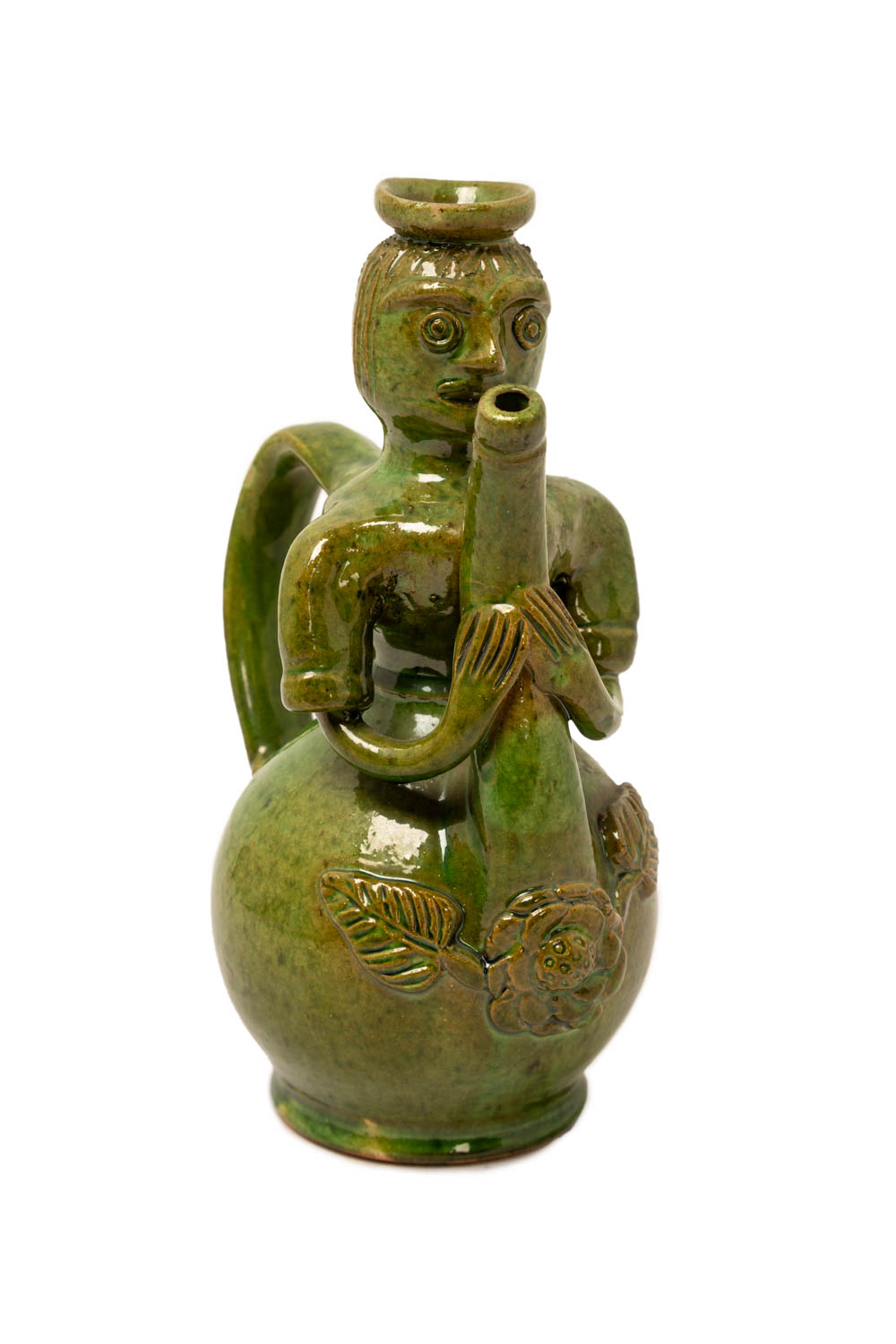
|
|
Unknown
Bardak, water container, from Serbia
Ca. 1968
Glazed ceramic
20,5 x 12,8 x 9,5 cm
Reg. 2774.4
National Museum of Colombia
Donated by the Belgrade Ethnographic Museum (1973)
|
|
| | 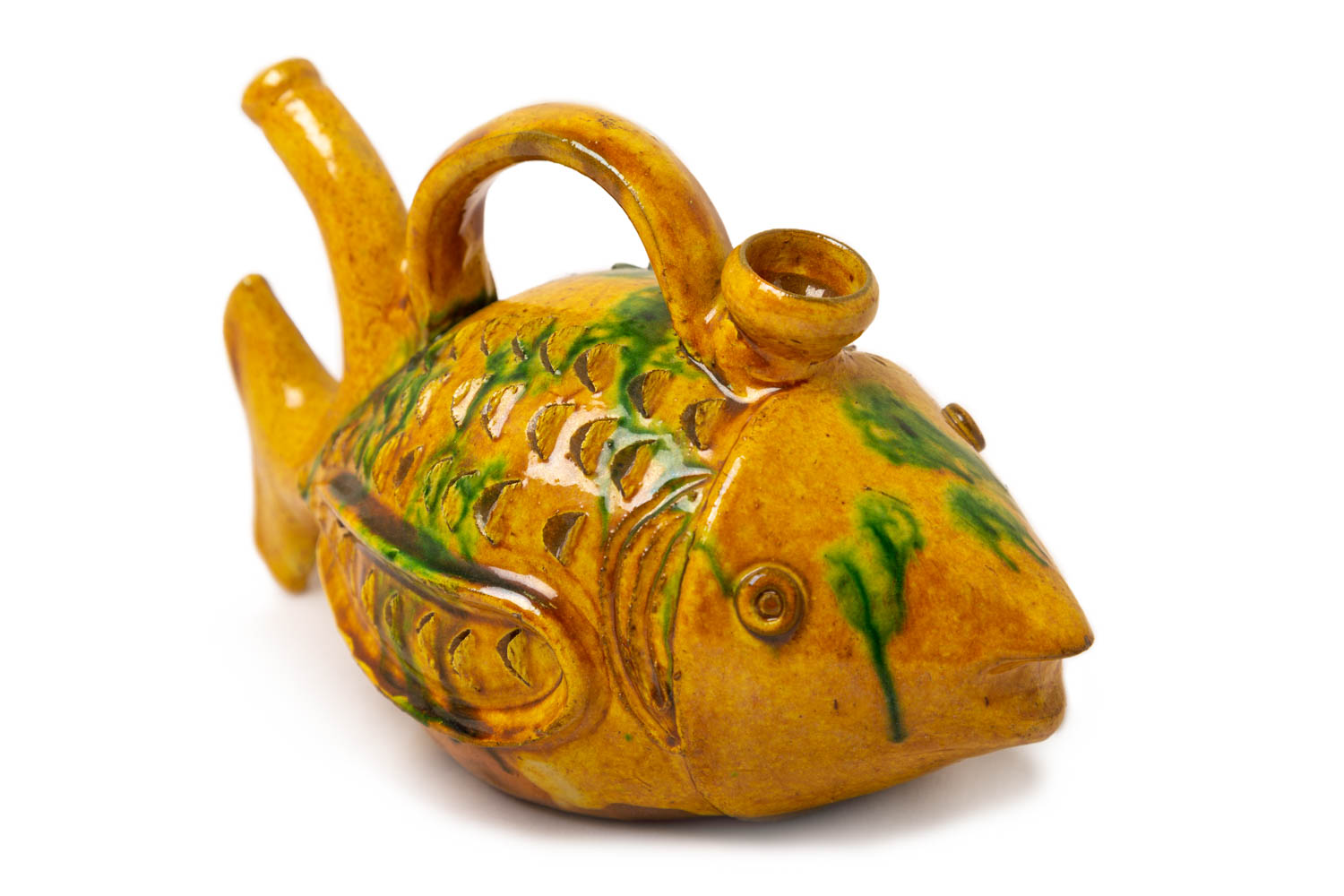
|
|
Unknown
Riba, fish-shaped water container, from Serbia
Ca. 1968
Glazed ceramic
23,5 x 17,5 x 14 cm
Reg. 2774.5
National Museum of Colombia
Donated by the Belgrade Ethnographic Museum (1973)
| |
| | 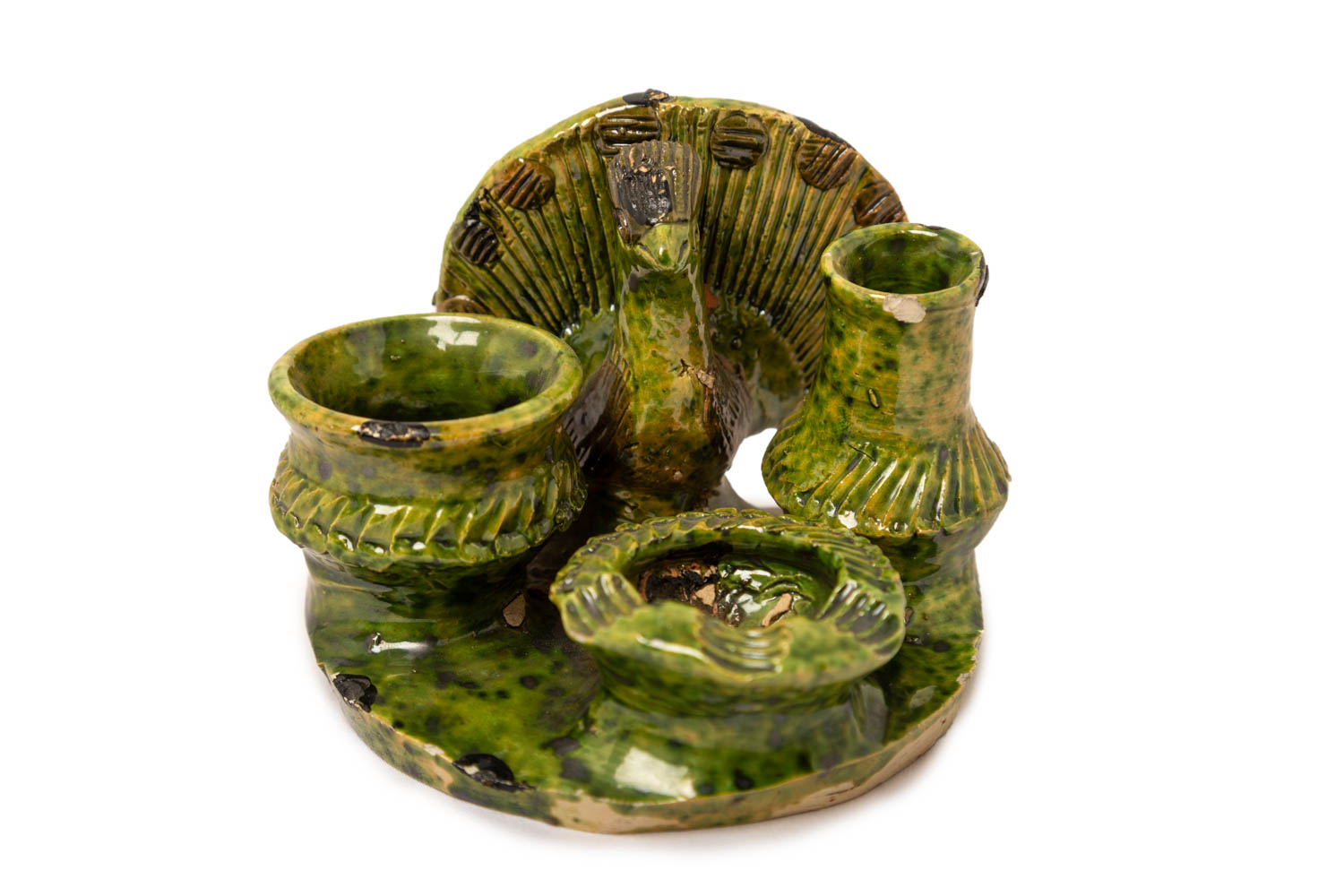
| |
Unknown
Ceramic candleholder, from Serbia
Ca. 1968
Glazed ceramic
11,8 x 10,5 x 9 cm
Reg. 2774.3
National Museum of Colombia
Donated by the Belgrade Ethnographic Museum (1973)
| |